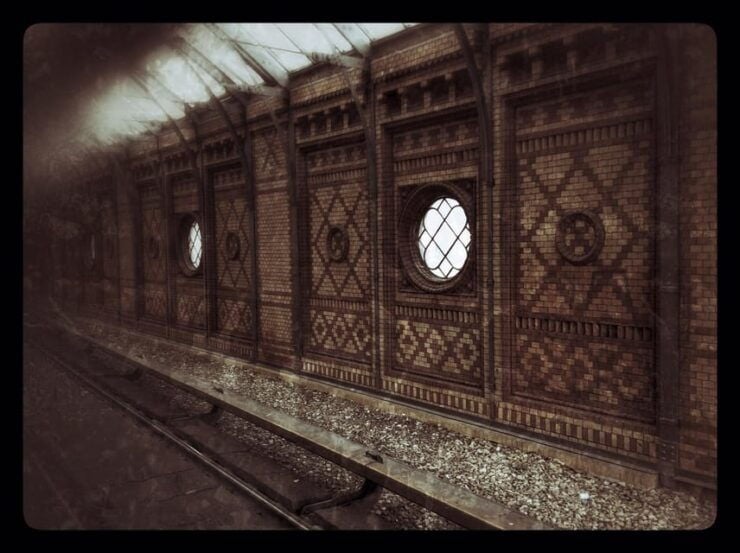When one thinks of World War II, the focus often lands on the Allies and their heroic efforts, but the story of resistance within Germany itself is equally compelling. It’s fascinating to consider how ordinary citizens, like a young student from Munich or a clergyman in Berlin, found the courage to stand up against a monstrous regime. They risked everything, and their stories, though lesser-known, reveal a profound struggle for morality and justice. What drove these individuals to act, and what impact did their actions have on the future of Germany?
Key Points

- Resistance against Nazi rule emerged from deep moral convictions and the urgency to act against daily injustices faced by ordinary citizens.
- Key figures like Dietrich Bonhoeffer and Claus von Stauffenberg exemplified bravery and faith-driven action, risking their lives for change.
- Significant movements such as the White Rose and the Kreisau Circle engaged diverse groups in anti-Nazi activism and post-war planning.
- Major events, including Georg Elser’s assassination attempt and the July 20 plot, highlighted organized dissent against Hitler’s regime.
- The legacy of resistance shaped Germany’s post-war identity, emphasizing moral accountability and the importance of civic engagement in democracy.
Historical Context of Resistance

During the dark years of Nazi rule, many Germans found the courage to resist, driven by a mix of personal convictions and a profound sense of moral duty.
Some, like Countess Maria von Maltzan, opened their homes to save Jewish lives, risking everything for humanity’s sake.
Others, such as Georg Elser, plotted bold acts of defiance, believing that one person could spark change.
These individuals often shared stories of their experiences, recounting the fear that gripped their hearts but also the glimmers of hope they clung to.
The resistance wasn’t just about politics; it was about ordinary people facing extraordinary challenges, a testament to the resilience of the human spirit amid oppression.
Their bravery continues to inspire generations today.
Find more activities and experiences we've covered in Berlin.
Key Motivations for Resistance

The heart of resistance in Germany stemmed from a deep-seated sense of moral obligation, with many individuals feeling compelled to act against the injustices they witnessed daily.
People like Maria von Maltzan risked everything to save Jews, driven by empathy and courage.
Conversations often revolved around the horrors unfolding, igniting a spark in those who couldn’t stand idly by. The urgency of the moment led many to join underground movements, fueled by hope for a better future.
Personal stories of loss and betrayal weighed heavily on their hearts, pushing them to take action.
For these brave souls, resistance wasn’t just political—it was a profoundly personal choice, one shaped by a shared humanity that refused to be silenced.
Prominent Resistance Figures

Many courageous individuals emerged as prominent figures in the German resistance, each driven by a unique blend of conviction and personal loss that propelled them to challenge the oppressive Nazi regime.
Take Dietrich Bonhoeffer, a theologian who believed faith demanded action. He risked everything to oppose the Nazis, ultimately paying the ultimate price for his beliefs.
Then there’s Claus von Stauffenberg, who orchestrated the July 20 plot to assassinate Hitler, showcasing sheer bravery.
And let’s not forget the Countess Maria von Maltzan, who quietly saved dozens of Jews, embodying compassion amidst horror.
Their stories remind us that resistance wasn’t just about grand gestures; it was about everyday people stepping up in extraordinary circumstances, often at great personal cost.
Notable Resistance Movements

In the shadow of tyranny, various resistance movements sprang to life, each fueled by a fierce determination to challenge the Nazi regime and restore hope to a beleaguered nation. Among these movements, a few stood out for their bravery and impact:
The White Rose: A group of university students who distributed anti-Nazi leaflets.
The Kreisau Circle: Intellectuals and aristocrats who planned a post-Nazi Germany.
The Red Orchestra: A network of spies that gathered crucial intelligence for the Allies.
These movements, while often overlooked, represented the spirit of defiance. Their members risked everything, showing that even in the darkest times, courage and conviction could spark resistance.
Their stories of resilience inspire many to this day.
More Great Thing To Do NearbyMajor Events and Actions

How did ordinary citizens transform into courageous resistors during pivotal moments of World War II? Many took risks, drawing inspiration from their moral convictions and witnessing atrocities. Key events, like the July 20, 1944, assassination attempt on Hitler, highlighted the bravery of individuals like Count von Stauffenberg. In contrast, grassroots movements emerged, with citizens sheltering Jews or distributing anti-Nazi pamphlets.
| Event | Impact |
|---|---|
| July 20, 1944 (Stauffenberg’s Attempt) | Showed military dissent |
| Georg Elser’s 1939 Attempt | Sparked underground resistance |
| White Rose Leaflets | Inspired youth activism |
| Operation Valkyrie | Unified various resistance groups |
These actions, fueled by desperation and hope, paved the way for a legacy of courage.
Impact on Post-War Germany

The resistance movements during World War II left a profound mark on post-war Germany, shaping its identity and sparking vital conversations about morality, accountability, and the role of citizens in a democracy. This legacy influenced how Germans viewed themselves and their responsibilities in a new democratic framework.
Key impacts include:
Shift in National Identity: Many Germans began to see themselves as part of a collective responsibility for the past.
Moral Reckoning: The actions of resistors prompted discussions about right and wrong, pushing society to confront difficult truths.
Civic Engagement: Citizens became more active in democracy, understanding the importance of their voices against tyranny.
These insights fostered a culture of reflection, urging future generations to never forget the lessons of their history.
Memorials and Remembrance

Memorials dedicated to the brave souls who resisted the Nazi regime serve as poignant reminders of courage and sacrifice, inviting visitors to reflect on the moral complexities of their choices.
As people wander through sites like the Bendlerblock or the memorial for Georg Elser, they often share stories of how these figures inspire them. One visitor recounts feeling a deep connection to Countess Maria von Maltzan, whose bravery saved many lives.
In places adorned with stumbling stones, they pause to remember the diplomats persecuted for their beliefs. These memorials aren’t just historical markers; they’re spaces for contemplation, encouraging everyone to consider what they might’ve done in the face of tyranny.
This fosters a dialogue that continues to resonate today.
Lessons From the Resistance

Reflecting on the bravery commemorated at memorials like the Bendlerblock, one can’t help but recognize the profound lessons that emerge from the stories of those who resisted the Nazi regime. Their experiences teach us valuable insights about courage and integrity.
Here are a few key takeaways:
Individual Responsibility: One person can spark change, as shown by figures like Georg Elser.
Solidarity in Adversity: Resistance flourished through networks of support, highlighting the power of community.
Moral Choices: They remind us that standing up for justice often requires personal sacrifice.
These lessons resonate today, encouraging individuals to reflect on their own values and the importance of standing against oppression in any form.
Frequently Asked Questions

What Languages Are Available for the Resistance Tour?
The tour offers guidance in German, English, and French. Participants can choose the language that suits them best, ensuring everyone enjoys a rich experience while exploring the fascinating stories of resistance during a tumultuous era.
How Many Participants Can Join the Tour?
The tour accommodates up to six participants, making it perfect for small groups. Friends can bond over shared experiences, while families can explore this fascinating history together, creating lasting memories along the way.
Is Food Included During the Tour?
The tour includes drinks and food, making it a delightful experience. Participants often share how enjoying local snacks enhances their journey, creating a memorable atmosphere while exploring the significant resistance sites together.
What Is the Cancellation Policy for the Tour?
The cancellation policy’s straightforward; travelers can cancel up to 24 hours in advance for a full refund. It’s a relief knowing plans can change without losing money, right? Flexibility makes booking so much easier.
How Long Does the Tour Last?
The tour lasts 3.5 hours, which gives participants plenty of time to explore fascinating sites. They’ll feel the weight of history while learning about courageous individuals who risked everything for their beliefs.
The Sum Up
In reflecting on German resistance during World War II, it’s clear that courage and conviction can flourish even in the darkest times.
The stories of individuals like Bonhoeffer and groups like the White Rose remind us that standing up against injustice is a powerful legacy. Their actions not only challenged tyranny but also shaped the moral fabric of post-war Germany.
As we remember their bravery, let’s carry their spirit forward, inspiring future generations to act against oppression wherever it appears.
You can check if your dates are available here:More Tour Reviews in Berlin
- “Festival of lights” Rickshaws Tour Start Brandenburger Tor
- Illuminiertes Berlin: Lichterfahrt mit Livekommentar
- 3 Days Private Guide Berlin By Walking and Public Transport
- Alternative tour of Berlin in Spanish
- Berlin: 2.5-Hour Beer & Sunset Sightseeing Boat Cruise
- Berlin: 2-Hour Christmas Lights Bus Tour incl. Mulled Wine
Looking for something different? Other Berlin activities we've written about
- “Festival of lights” Rickshaws Tour Start Brandenburger Tor
- Illuminiertes Berlin: Lichterfahrt mit Livekommentar
- 3 Days Private Guide Berlin By Walking and Public Transport
- Alternative tour of Berlin in Spanish
- Berlin: 2.5-Hour Beer & Sunset Sightseeing Boat Cruise
- Berlin: 2-Hour Christmas Lights Bus Tour incl. Mulled Wine
- Berlin: 1h Boutiquestyle-Cruise on the Historic HEMINGWAY
- Berlin: 1-hour Highlights River Cruise Through Old and New
- Berlin: 1h Boutiquestyle-Cruise on the Electric FITZGERALD
- Berlin: 1-Hour Boat Tour with Bilingual Guide (Ger/Eng)
- Berlin: All Inclusive WelcomeCard & Transportation Zones ABC
- Berlin: “90s Forever – Hits & Acrobatics” – Varieté Show
